Compiled by Team IAnD
Photography: cepezed | Lucas van der Wee; courtesy v2com
Read Time: 2 mins 30 secs
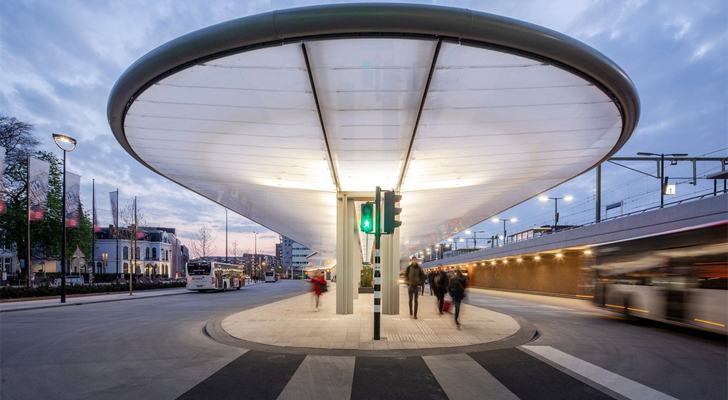 |
| . |
Netherlands has its first fully-integrated bus station that generates its own energy. Can this module toe a global footprint?
Architecture office cepezed designs first self-sufficient bus station in Tilburg, The Netherlands as part of a large-scale revitalisation of the Tilburg public transport hub.
The basic setup consists of a series of very thin columns with an evenly minimalistic awning structure on top of them. It is this singular structure that holds the key to the station’s sustainable self-sufficiency.
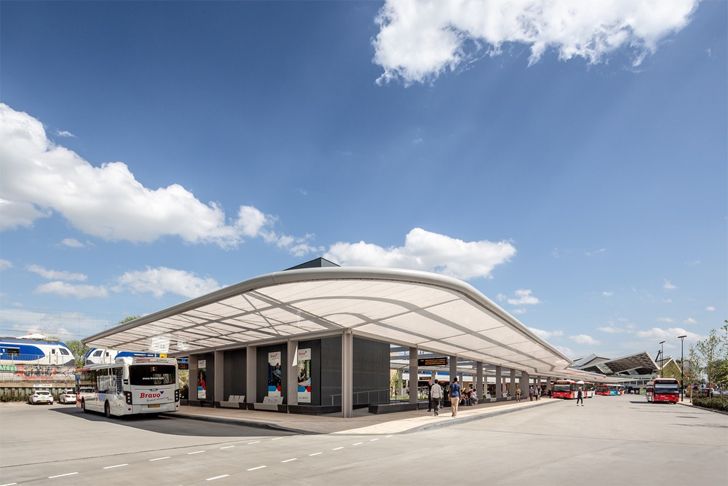 |
| . |
 |
| . |
The construction forms a triangular circuit with a length of over 160 metres and an open space in the centre. The bus positions are arranged around the outer side, as the awning circulation runs from 14 to 30 metres width in total and has two offsets in its contour, which are primarily functional and align with the urban context; visually too, they resonate elegantly with the monumental roof structure of the adjoining train station.
 |
| . |
The spacious awning all around fully covers the bus platforms and additionally part of the buses. The structure consists of a steel framework covered with ETFE-foil. The lighting is fitted above this foil. During the day, the awning filters sunlight, while during the dark hours, it becomes one large and spacious lighting element that strongly adds to the travellers’ feeling of safety.
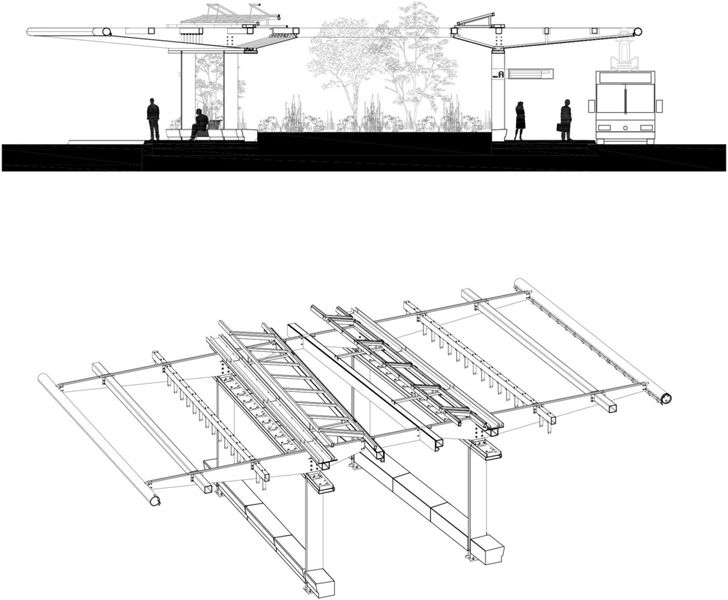 |
| . |
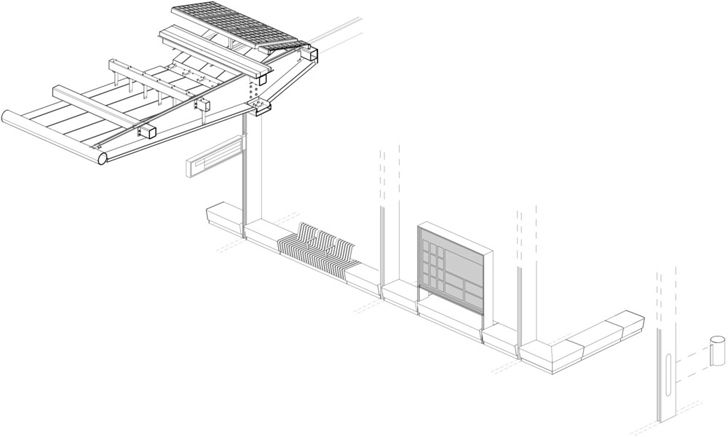 |
| . |
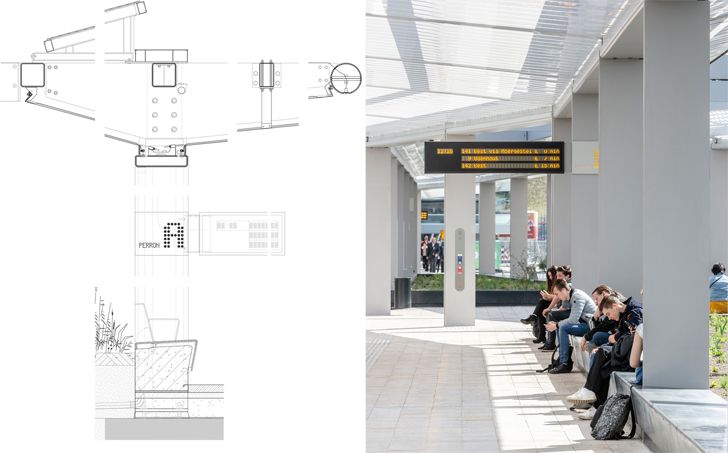 |
| . |
250 sq. m. of solar panels lie atop the awning. In strong daylight, these cast a shadow pattern on the ETFE that makes the travellers aware of their presence. The panels supply sufficient energy for all functionalities of the bus station, including the lighting of the awning, the digital information signs, the staff canteen and the public transport service point. The commercial space has its own energy circuit and energy metre.
Cepezed has conceived a clear and pure system for the bus station and engineered it meticulously. For example, the thin columns composed of steel plates and strips also contain water drainage and electric cabling. The S.O.S.-button and intercom are also integrated into one of the columns. The folded sheet steel that functions as the central load-bearing stability beam also functions as a gutter.
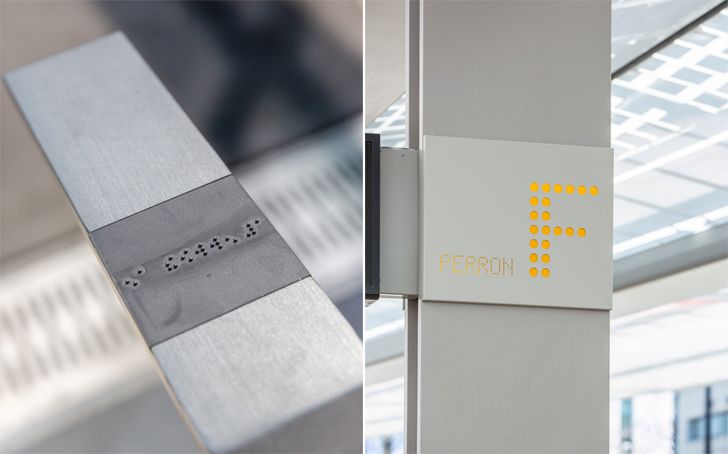 |
| . |
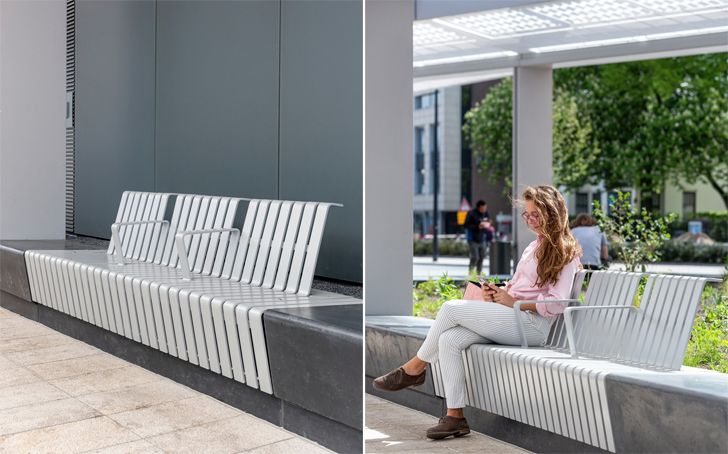 |
| . |
The lighting of the terrace adjoining the pavilion is integrated into the beams spanning the awning structure at that point. The sitting edges of black pigmented concrete contain several seats executed in strip steel with integrated heating. The drainage holes in the load-bearing gutter are also used for fixation of the stretched ETFE-foil, while the digital information displays are invisibly fastened. The pavilion has a function in the overall stability of the awning. Also, movement sensors are integrated into the steel edge of the awning at every 14 metres and respond to the presence of buses and people so that the lighting is adequate in every situation while the use of energy is kept to a minimum.
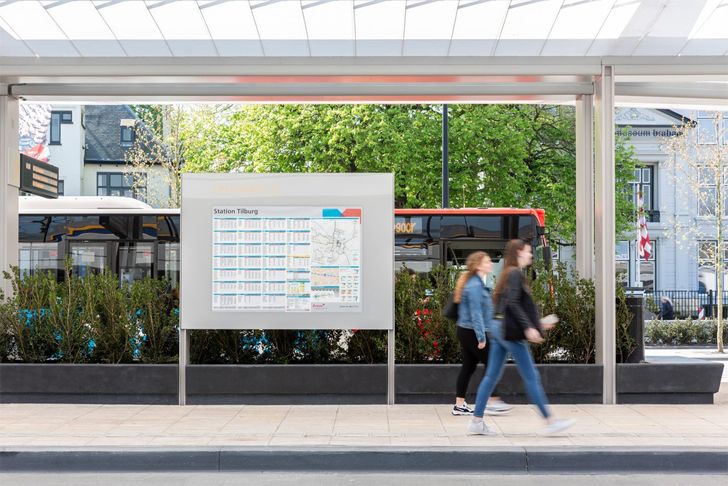 |
| . |
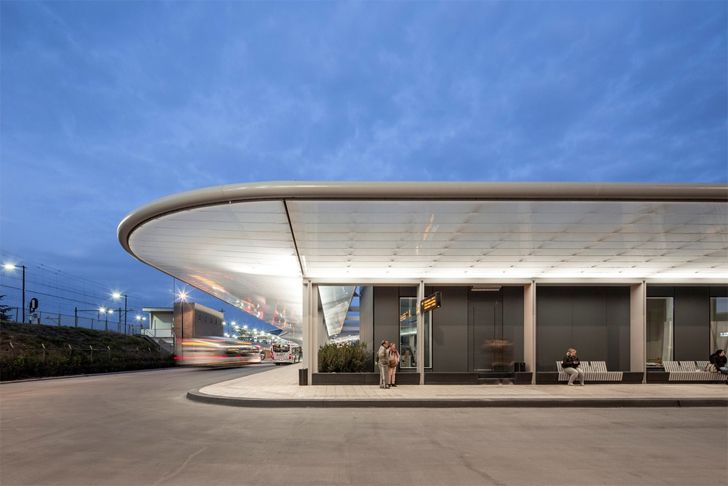 |
| . |
The station is also designed for inclusiveness, where the elevated terrace can be reached by wheel chairs through a ramp and the handrails between the terrace and the platforms are provided with braille signing. The unornamented design of the ETFE foil with a minimum of edges and corners reduces cleaning surface; is self-cleaning and hardly needs any maintenance. For service on the solar panels and electrical equipment, the awning circulation is easily accessible via the pavilion and a walkable cable gutter. Additionally, for the future, the bus station is already prepared for the placement of extra electrical equipment that can quickly charge electrical buses.
Fact File:
Project: Bus station Tilburg
Client: City council Tilburg
Architect: architectenbureau cepezed, Delft
Structural engineering: IMd Raadgevende Ingenieurs, Rotterdam
Consultant mechanical & electrical engineering: Nelissen Ingenieursbureau b.v., Eindhoven
Consultant building physics, fire safety and Sustainability: Nelissen Ingenieursbureau b.v., Eindhoven
Landscape architect/urban planner: Atelier Quadrat, Rotterdam
Lighting: Atelier LEK, Rotterdam
Length and width | gfa building: 160 m en 30 m (at widest point) | 108m² bvo
Sustainability: 250 m² of solar panels on the roof; yield = NOM (zero use on the electric bill)

No comments :
Post a Comment